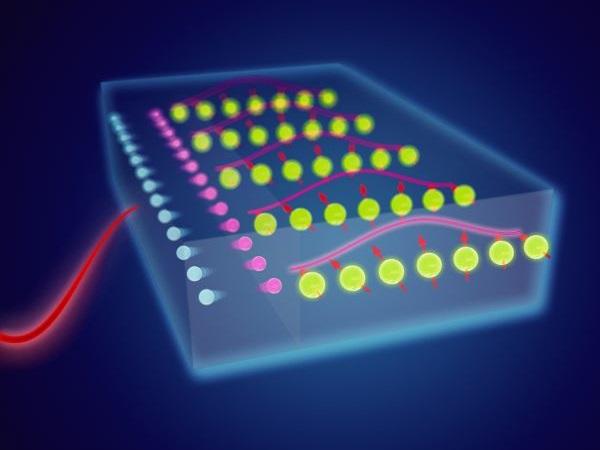A light wave at frequencies in the terahertz (from left) is converted into a spin wave (right) in a material made of thin metallic layers.
An international research team led by the Helmholtz-Zentrum Dresden-Rossendorf (HZDR), of which Italian Stefano Bonetti, professor of materials physics at Ca’ Foscari University of Venice, is a member, has developed a new efficient method for making electromagnetic waves, such as those that enable our cell phones to communicate, interact with microscopic “spin waves,” or magnetic waves.
As the experts report in Nature Physics, their experiment, in accordance with theoretical calculations presented in the same paper, elucidates the fundamental mechanism of this never-before-realized process. The results are an important step in the development of new, energy-saving, data-processing technologies based on magnetic materials.
“The essence of the research,” Bonetti reports, “is that we were able to set off, inside a material, magnetic waves with wavelengths of a billionth of a meter and at very high frequencies (1,000 GHz, a thousand times faster than current processors). Theoretically, these waves can be used to transfer information into miniaturized electronic components at very high frequencies and low power consumption.
The originality of these results is that the magnetic waves within the material were created using light with wavelengths a million times greater than the magnetic waves themselves. This is normally impossible: it would be like trying to pluck the string of a guitar with a pick a million times larger than the guitar itself.
Instead, by creating a special ‘sandwich’ of very thin materials, we got around this problem, which was one of the main obstacles for this technology. Others remain, but it is a fundamental step forward, allowing us to create a bridge between the macroscopic world where we live, with the microscopic world of quantum physics.”
Credits: HZDR/Juniks

